by Stuart Hashagen
Strolling round Glasgow looking for ghost signs and taking photographs raises some interesting questions about what is a ghost sign, what isn’t, and whether definitions matter so much after all.
Matters are not helped by the fact that definitions of ghost signs are contested, and lacking widespread acceptance. According to Wikipedia: ‘A ghost sign is an old hand-painted advertising sign that has been preserved on a building for an extended period of time. The sign may be kept for its nostalgic appeal, or simply indifference by the owner.’
In article written by Geraldine Marshall together with Sam Roberts, the founder of Ghost Signs UK, we read that a ghost sign should be ‘faded to the point of illegibility… echoing the robust commerce of times past’, and that ‘it must be more than 50 years old, and advertises a product that is now obsolete.’
So consensus is approached around the concepts of age, redundancy and almost illegible old paintwork. Do these thoughts work for us as we look around Glasgow? Should we only be interested in those signs that meet the criteria? Or should we take a broader view?
Here is one of the signs from the Trongate area, that seems to meet all the criteria: it is old, painted, redundant, and probably refers to earlier ‘robust commerce’:

Here is another sign for the “TOBACCO WAREHOUSE” on James Watt Street, this time it is old, redundant and certainly linked to robust commerce. However, does the fact it is not painted or faded mean it does not qualify as a ghost sign?
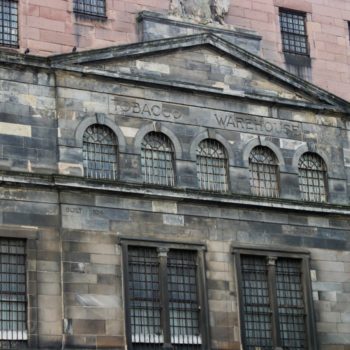
The notion of redundancy is particularly interesting when ghost signs are recognised as a notable element of a building or environment, and become looked after or repurposed. This old Woolworths sign, at the corner of Renfrew Street, does fit most of the criteria for a ghost sign, other than abandonment: this sign is reportedly maintained and guarded by an enthusiastic local resident.
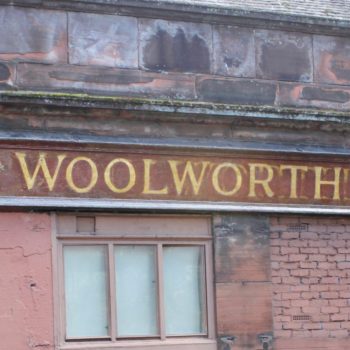
Then we come to the signs that have been ‘purposefully repurposed’. There are now a good number to be seen in the West End, especially in the on-trend bars, cafés and restaurants springing up across the city. Here is a former dairy, now a restaurant, and a former antiques shop, now an Indian restaurant. In both cases the ghost signs have been incorporated into the façade of the new business. But if they are no longer redundant are they still ghost signs?
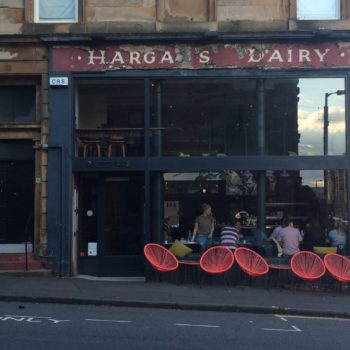

Perhaps more interesting are businesses that have changed hands, in this case after a considerable period of dereliction, but continue to trade under the original business name, and with the original sign, for example the Kelvingrove Café – although now a bar rather than a café.
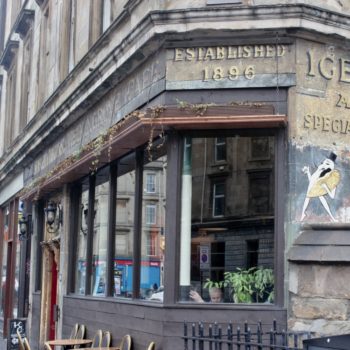
And here is an even more convoluted story: The old Coopers grocery shop in Great Western Road was converted into a pub – Chimichungas (as featured in the TV series Tutti Frutti) in the 1980s. It is now still a pub, but with the original shop name of Coopers and the original brass nameplates on the pavement and the mosaic threshold.
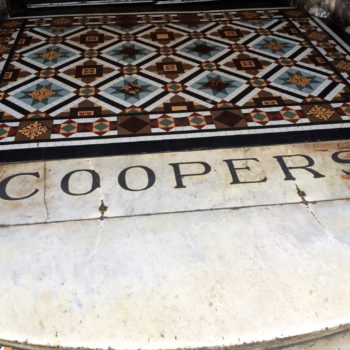
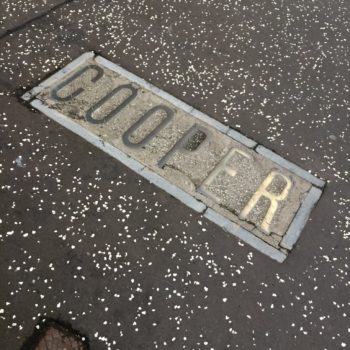
These signs are no longer redundant – so can we really call them ghost signs? Perhaps they are zombie signs …. until the next time things change.
Whether we call them ghost signs, zombie signs, or something else, they are appealing in themselves as an element in the urban landscape, evidencing its evolution and change. They also give an insight into the story of rising and falling business and commerce in the city. For example, the abandoned BHS store in Sauchiehall Street still has a large sign which is hardly a ghost sign, but does say a lot about the fate of the high street.

To conclude, ironically several of the emerging businesses now make good use of ghost signs as part of their identity, so ghost signs can signal both decline and growth in the urban landscape.
